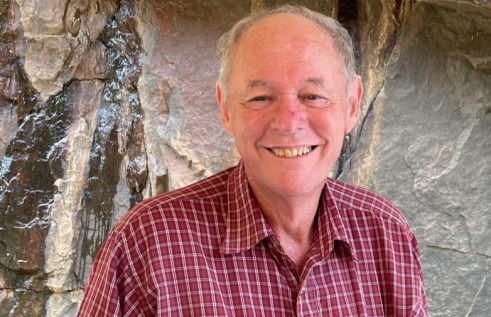RIEL seminar series
Two short talks: cane toads and carbon fluxes
| Presenter | Dr Francesco Ulloa Cedamanos and Prof Keith Christian | |
|---|---|---|
| Date |
|
|
| Time |
to
|
|
| Contact person | E: RIEL.outreach@cdu.edu.au | |
| Location | Yellow 1.1.39 and online | |
| Open to | Public | |
Linking terrestrial–aquatic carbon fluxes to rectify the Australian carbon balance, presented by Dr Francesco Ulloa Cedamanos
Despite limited concurrent measurements, the lack of integrated observations leads to overestimation of carbon storage capacity in Australian ecosystems. To improve accuracy, comprehensive approaches encompassing both terrestrial and aquatic ecosystems are crucial. Our understanding of carbon transport in streams and rivers is limited to periodic sampling, disregarding flow events and seasonal fluctuations. By implementing high-frequency sensors and conducting sampling campaigns near flux towers, we can integrate carbon fluxes and track its fate across ecosystems. In this context, the ARC Discovery Project (DP) aims to develop the first assessment of terrestrial carbon export to streams and rivers across Australia. The project will integrate direct measurements from ecosystem observatories of the Terrestrial Ecosystem Research Network (TERN) with remote sensing and advanced statistical modelling techniques.
In this seminar, Francesco Ulloa, a post-doctoral researcher at RIEL specialising in freshwater biogeochemistry, will present the strategies that have been adopted to integrate terrestrial and aquatic carbon flux measurements across diverse biomes of Australia by leveraging TERN ecosystem observatories. The seminar will provide insights into the approaches employed in advancing our understanding of carbon dynamics in Australian ecosystems.
Evaporative water loss in cane toads of the world, presented by Prof Keith Christian
Like other “typical” frogs, toads have very high rates of water loss – similar to a free surface of water with the size and shape of a toad. However, a recent publication reported significant resistance to evaporative water loss in cane toads from some populations, but not others. This raised the question – Is this the first instance of the evolution of resistance to water loss in any toad in the world – or is there some other physiological process related to these measurements? In May, we travelled to Queensland to measure toads from different locations, and now we know the answer to that question.
Related Events

Boring beetles and super models: mapping the distribution of a new invader
The polyphagous shot-hole borer (PSHB) is a tiny beetle with a mouthful of a name, but it’s been making headlines as a new invasive species in Australia. PSHB was first detected in Perth three years ago and has since devastated trees across the city. There are concerns about what its further spread could mean for urban, agricultural and natural environments.
Read more about Boring beetles and super models: mapping the distribution of a new invader
Groundwater: Hidden wonder of the Northern Territory
The seminar ‘Groundwater: Hidden wonder of the Northern Territory’ will be presented in two parts. First, Steven will provide a basic explanation of what groundwater is and concepts of how groundwater systems operate. He will then give an NT-wide view of groundwater properties and processes.
Read more about Groundwater: Hidden wonder of the Northern Territory
Carbon and water adventures in north Australia
With climate change and increasing land use pressures there is more and more demand for knowledge of carbon dynamics and water use as well as water resource management. Lindsay’s research is focused on providing better understanding of the biophysical environment of tropical land and water systems.
Read more about Carbon and water adventures in north Australia

